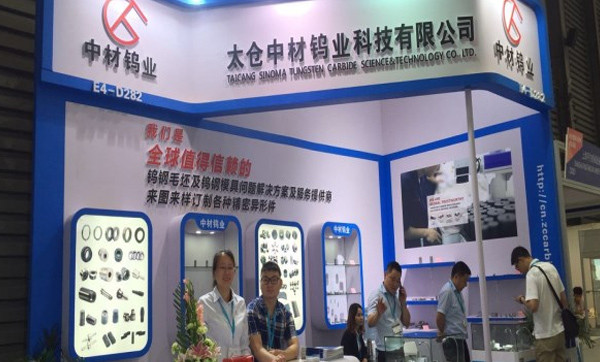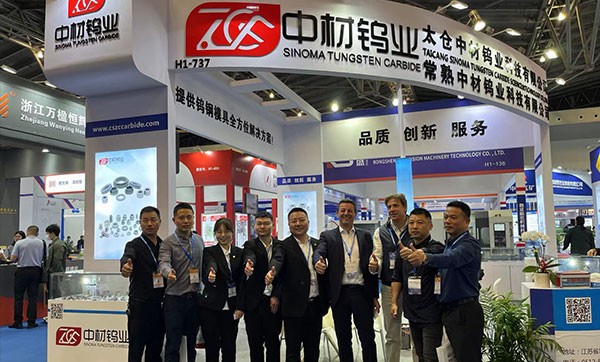Tungsten carbide molds play a crucial role in various high-precision industries due to their exceptional hardness, wear resistance, and durability. These characteristics make tungsten carbide molds ideal for demanding applications such as metal forming, powder metallurgy, and injection molding. With the advent of new technologies, the manufacturing process of tungsten carbide molds has seen significant advancements. This article explores the innovative applications of these technologies in enhancing the efficiency, precision, and overall quality of tungsten carbide mold production.
1. Additive Manufacturing (3D Printing)
Additive manufacturing, commonly known as 3D printing, has revolutionized the production of tungsten carbide molds. This technology enables the creation of complex geometries that are difficult or impossible to achieve through traditional subtractive manufacturing methods. In the context of tungsten carbide molds, 3D printing allows for:
-
Rapid Prototyping: Engineers can quickly produce prototypes to test and refine mold designs, significantly reducing development time and costs.
-
Customization: 3D printing facilitates the production of customized molds tailored to specific applications, improving performance and efficiency.
-
Material Optimization: Advanced 3D printing techniques, such as binder jetting and laser sintering, enable precise control over material composition and microstructure, enhancing the properties of the final mold.
2. Computer-Aided Design (CAD) and Computer-Aided Manufacturing (CAM)
CAD and CAM technologies have become integral to the design and manufacturing of tungsten carbide molds. These tools offer numerous benefits, including:
-
Precision Design: CAD software allows for the creation of highly detailed and accurate mold designs, ensuring optimal performance and longevity.
-
Simulation and Analysis: Engineers can use CAD software to simulate and analyze mold performance under various conditions, identifying potential issues and making necessary adjustments before production.
-
Automated Machining: CAM software translates CAD designs into precise instructions for CNC machines, enabling automated and highly accurate machining of tungsten carbide molds.
3. Advanced CNC Machining
CNC (Computer Numerical Control) machining has undergone significant advancements, making it a cornerstone technology in the production of tungsten carbide molds. Modern CNC machines offer:
-
High Precision: Advanced CNC machines can achieve micron-level precision, essential for the production of high-quality tungsten carbide molds.
-
Multi-Axis Machining: Multi-axis CNC machines can perform complex cutting and shaping operations, reducing the need for multiple setups and increasing efficiency.
-
Automated Quality Control: Integrated quality control systems in CNC machines ensure that each mold meets stringent specifications, reducing the likelihood of defects and improving overall quality.
4. Surface Treatment Technologies
Surface treatment technologies play a vital role in enhancing the performance and lifespan of tungsten carbide molds. Some of the key surface treatment methods include:
-
Chemical Vapor Deposition (CVD) and Physical Vapor Deposition (PVD): These techniques involve depositing thin, hard coatings on the surface of tungsten carbide molds to improve wear resistance and reduce friction.
-
Laser Surface Texturing: Laser technology can create micro-textures on the mold surface, enhancing lubrication and reducing wear during operation.
-
Electrochemical Machining (ECM): ECM is used to achieve smooth, precise surfaces on tungsten carbide molds, reducing the need for manual polishing and finishing.
5. Artificial Intelligence and Machine Learning
The integration of artificial intelligence (AI) and machine learning (ML) in the manufacturing process of tungsten carbide molds offers transformative potential. Applications include:
-
Predictive Maintenance: AI algorithms can analyze data from manufacturing equipment to predict and prevent potential failures, reducing downtime and maintenance costs.
-
Process Optimization: Machine learning models can optimize manufacturing parameters, such as cutting speeds and temperatures, to enhance efficiency and quality.
-
Quality Control: AI-powered inspection systems can detect defects and inconsistencies in real-time, ensuring that only molds meeting the highest standards are delivered.
6. Internet of Things (IoT)
The IoT connects manufacturing equipment and systems, enabling real-time monitoring and control of the production process. In the context of tungsten carbide molds, IoT applications include:
-
Smart Manufacturing: IoT-enabled machines can communicate with each other, coordinating operations to optimize production efficiency and reduce waste.
-
Remote Monitoring: IoT sensors allow for remote monitoring of equipment performance, enabling timely interventions to prevent issues and maintain optimal operation.
-
Data-Driven Decision Making: The vast amounts of data collected by IoT devices can be analyzed to gain insights into the manufacturing process, driving continuous improvement.
-
Conclusion
The integration of new technologies in the manufacturing process of tungsten carbide molds has brought about substantial improvements in efficiency, precision, and quality. Additive manufacturing, CAD/CAM, advanced CNC machining, surface treatment technologies, AI/ML, and IoT are revolutionizing the way tungsten carbide molds are designed, produced, and maintained. As these technologies continue to evolve, the future of tungsten carbide mold manufacturing promises even greater advancements, meeting the ever-increasing demands of high-precision industries.




